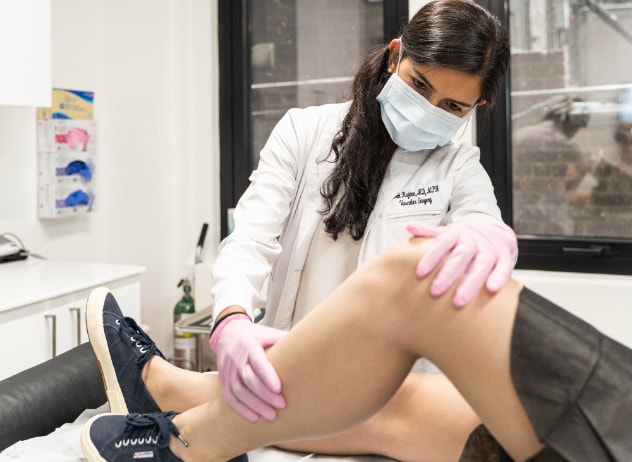There is no such thing as a catch-all ‘most effective treatment method’ for spider veins; the treatment plan for spider veins depends on the patient’s outcome goal, the severity of the disease, and the patient’s general health. Doctors may first recommend self-care at home for spider vein treatment, such as the use of compression stockings, regular exercise, dietary changes, and avoiding standing up for long periods of time. If further treatment is required, vein specialists may perform minimally invasive methods such as the following:
- Sclerotherapy: Sclerotherapy is the most frequently used method of treatment of spider veins. An agent called a sclerosant is injected into the diseased veins that cause the veins to stick to one another and close up. The veins are then absorbed by the body, clearing the skin.
- VenaSeal: VenaSeal is a minimally invasive medical procedure in which a bio-adhesive is applied on the diseased veins using a catheter, causing the veins to seal off. The procedure takes anywhere between 30 minutes to 60 minutes. Eventually, the veins are reabsorbed by the body.

- Radiofrequency Ablation: In this procedure, a numbing agent is first applied over the area where the veins are. Then, heat is applied using radiofrequency. The heat then stops blood flow in the diseased veins, and over time the veins disappear.
- Endovenous laser treatment: In this laser treatment procedure, heat from a laser is applied to close or shrink the spider veins. Endovenous laser treatment is a minimally invasive procedure that takes less than an hour and does not require a hospital stay. You will be able to walk out of the hospital within an hour after the procedure is done.
- Varithena: Varithena is a microfoam sclerosant that is injected into diseased veins. This is a non-surgical procedure that takes less than 60 minutes in which the diseased veins are closed down and eventually disappear. The recovery period for this procedure is also very short; the patient will be able to move about freely within an hour of the procedure.
Is spider vein treatment expensive?
Sclerotherapy generally costs around $350 to $500 per session. You may require multiple sessions, depending on the extent of your spider veins. You can get a more precise estimate of the number of sessions you would require and the overall cost after your doctor reviews your case in the first consultation.
More advanced procedures can cost more, such as Varithena (which costs around $2000 to $3000) and radiofrequency ablation (around $3000 to $5000). Again, a more precise estimate can only be made after an evaluation of the extent of your disease.
Most insurance companies have a policy to only cover medical expenses that are deemed medically necessary. Spider vein treatment is generally considered a cosmetic treatment and not medically necessary, which would mean that most insurance will not cover spider vein treatment. However, it is best to discuss with the doctor’s office to determine whether your insurance does cover the treatment.
If you would like to know more about the best vein treatment options for you, book an appointment with the best vein doctors in California.
How can I manage/treat spider veins at home?
Exercise is good for your overall general health, including for spider veins. Exercising regularly helps get your heart pumping and keep the blood circulating normally. Exercise that strengthens the calf muscles is especially important because the muscles in your calves must work the most against gravity to help the veins push blood back to the heart. This means that walking, in particular, is very good for spider veins. Doctors will recommend that patients of venous insufficiency walk 30 minutes a day every day if possible, even if it is only to a grocery shop and back.
Obesity is one of the factors that cause spider veins. If you already have spider veins, losing weight cannot reverse or cure the damage that is already there in your veins, but it can help slow down the progress of the diseased veins and ease some of the symptoms. If you are overweight, losing extra weight will decrease the pressure on your legs, and make it easier for your leg muscles and veins to pump blood back to the heart. This means that you may feel some relief from symptoms such as leg pain, fatigue, and swelling. But the weight loss must be achieved through healthy means such as proper diet and exercise and be in line with your doctor’s medical advice.
It is also advisable to quit smoking and excessive drinking. Smoking and excessive drinking of alcohol are bad for not only your veins but for your general health and well-being.
Can I walk or exercise after spider vein treatment?
Yes, you can walk after a spider vein treatment procedure, irrespective of which procedure you have. Most spider vein treatment procedures are minimally invasive and can be performed in an outpatient department. The procedures themselves generally take about 30 minutes to 60 minutes and you will be able to walk out of the procedure within half an hour of completing the procedure.
In fact, walking after spider vein treatment is encouraged by doctors. Regular walking improves blood circulation in the legs, prevents blood clots, and helps speed up the healing process after spider vein treatment. Doctors recommend that you walk every day after the procedure, increasing distance and speed slowly day by day.
As for exercise, doctors recommend that you stay away from strenuous activities and vigorous exercise for a few weeks or at least until your legs have healed after spider vein treatment. But light exercise and walking are highly recommended.
Our vein clinic at San Diego is currently located near the Torrey Pine beach state park, close to the Westfield UTC Shopping Center. Our experienced Harvard-trained vein doctors can offer the best care possible to help you.

